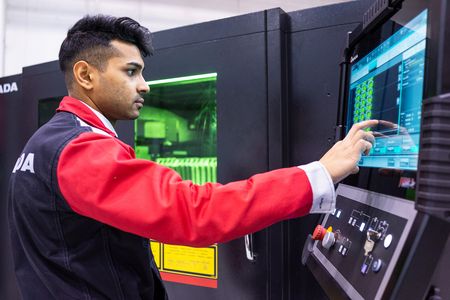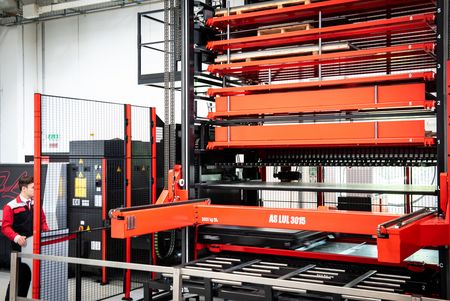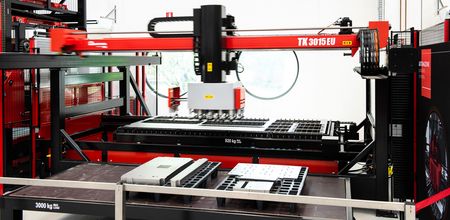For decades, automation has played a central role in every production plant with innovative trends and aimed at improving process efficiency. Today, in 4.0 era, automation is one of the cornerstones of a productive paradigm that, in addition to speeding up repetitive steps, aims to develop a new relationship of collaboration and empowerment (empowerment), between machines, operators and processes in place.

Advanced Automation as the enabling technology of the 4.0 model
Since the dawn of the phenomenon 4.0, the Observatory Transition Industry 4.0 of the Politecnico di Milano has identified a series of enabling technologies, dividing them into two major strands: the one closest to the IT world, including the latest achievements of Data Science, the analysis of Big Data and Cloud Manufacturing, and that relating to Operational Technologies (OT), which has always been the core of the industrial ecosystem and long independent of the IT plan. This macrocosm includes innovative human-machine interfaces and Advanced Automation systems, where this expression refers to the latest frontiers of automated systems, equipped with cognitive skills and interaction, as well as self-learning.

Although it is a path in constant evolution, whose best fruits will be picked in the near future, the trend is evident and already demonstrated by the numbers. According to the latest Polytechnic Report, in fact, the vast majority of investment in technologies 4.0 is dedicated to industrial IIoT projects, category in which Advanced Automation occupies the third position, after Analytics and Cloud Manufacturing. There is no doubt that on the convergence of "classic" industrial automation and Data Science (AI) the challenge of competitiveness in the industrial world is being fought (and will be fought more and more).

Industrial automation, a concept in strong evolution
The very idea of automation is changing and we are witnessing the birth of a new paradigm: on one hand there remains the concept of operation with minimal supervision that has always been a goal to strive for, on the other the automation becomes an enhancement, empowerment of the real operator, whose tasks may change over time but which will remain the core of the industrial ecosystem and shopfloor.
Defining the first of the two phenomena is quite simple, and we can give concrete examples related to the AMADA ecosystem, which has always produced both machines and automations. We live in a world in which production (from which the relative challenges) has become very dynamic and in which respect for time and budget clashes with ever smaller batches, pressing demand for prototypes and with very high mix productions and low volume, which makes the capacity to align with market demands a real challenge. In the production process, automation serves precisely this: to maximize productivity, but above all to make it as predictable and predictable as possible despite the external turbulence. AMADA allows to simplify the production through its automations for laser cutting machines, combined and punching machines, aimed at maximizing the efficiency of loading and unloading operations and simultaneous sorting of parts, that if managed manually are synonymous with inevitable slowdowns, downtime, damaged parts and less precision, factors that translate into growing costs and, above all, in the increase of lead time. The end result can only be the inability to meet the demands of the market.

Very important, for this purpose, is also the concept of automatic storage (of processed sheets, but also of raw material), which makes use of intelligent technologies, as well as that of automated logistics operations and modularity, that helps precisely to meet the needs of the market by providing scalability to your plant. All this, aimed not only to automate the single repetitive task ensuring 24/7 operation, but to build a highly automated production process, from which all the benefits of the case.

Automation 4.0: towards a new relationship between man and machine
Today, the “classic” concept of automation, based on the peculiar characteristics of the machines to accelerate repetitive operations and maximize efficiency, is joined by advanced automation, daughter of the approach between IT and OT and the exploitation of data in the industrial context. As anticipated, the paradigm changes: on the one hand, the intelligence integrated in the 4.0 model insists on the concept of less supervision and we hypothesize – for instance - plants with the ability to auto-repair, on the other hand, a concept of man-machine collaborative work is developing, not only based on new interfaces, but also on a physical contact never existed before, where machines and operators have always maintained, even for safety reasons, separate spheres of action.

As for the interfaces, think of the increasing pervasiveness of the Computer Vision in the field of quality control or remote monitoring of plants, while in the second case the manual example is that of Cobot, collaborative robots designed to enhance human activity within the shopfloor, first relieving operators from hazardous, exhausting or extremely repetitive activities, and then becoming an extension of the operator himself in the future. The goal is to maximise productivity without sacrificing the experience and professionalism of the operator: the concept to be pursued becomes that of the best of both worlds, from which a positive impact also towards the engagement and the productivity of the operators themselves.